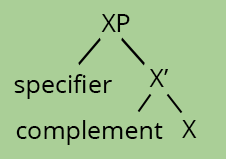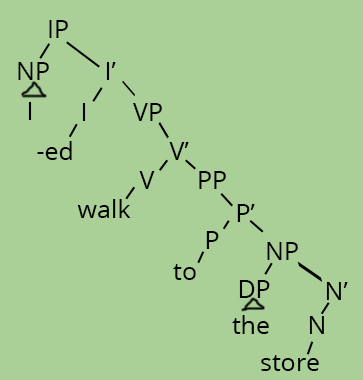syntax
Of all the fields in linguistics, Syntax is the most difficult, in my opinion. Syntax is the study of sentence structure and as such, involves diagramming sentences to see how they're processed and formed in the mind. Syntax is more mathematical than the other fields of linguistics.
Syntax is one of the older fields of linguistics and the most prevalent theories on Syntax were written by Noam Chomsky with generative grammar. Syntax itself can be referred to as grammar, as it refers to the set of rules that govern language structure. There are many different flavors of syntactic theory, but generative grammar is the most popular and the most widely taught flavor of Syntax. This isn't to say that there aren't debates over syntactic structure because there definitely is and there probably will be for a long time.
The base of Syntax requires you to also be familiar with Morphology and Morphological concepts, because to get anywhere in Syntax, you must be familiar with the different kinds of words and their roles in language. This is crucial to being able to draw a Syntax tree, which is the base of Syntactic theory.
Let's take a sentence then. Let's make it a relatively simple sentence such as "I walked to the store."
Let's identify the different parts of this sentence:
I = first person singular
walked = past tense
to = preposition
the = determiner, specific (determiners are words such as a/an, the, that, these, this, those etc.)
store = noun
The particular Syntax theory that I learned was called X-Bar Theory, which is a method of drawing syntax trees. X-Bar Theory is very complicated and has an incredible amount of rules when it comes to structure. Here is a visual aid:

The very basics of X-Bar Theory is that it consists of an "XP" such as an "IP", "VP", "PP", "NP" etc. These stand for "Inflectional Phrase", "Verb Phrase", "Prepositional Phrase", and "Noun Phrase." Each XP contains an X' (referred to as "X bar," hence the name of the theory) and an X. Therefore an NP contains an N' and an N.
The "specifier" position allows another XP to be inserted. Specifiers include things like pronouns (I, you, we, she), determiners (the, that, a), and possessives (My, yours, hers, Mary's). The "complement" position is a word, phrase, or clause that helps to complete the meaning of the sentence. The "complement" position can be left blank.
In our example sentence, the "I" is in the specifier position, because it specifies the subject of the verb.
The whole sentence "I walked to the store" is an Inflectional Phrase (IP). The "walked to the store" part is a Verb Phrase (VP). "To the store" is a Prepositional Phrase (PP) because it because with the preposition to. "The store" is a Noun Phrase (NP) that contains a determiner "the" and therefore means that "the" is a Determiner Phrase (DP) in the complement position of the NP (have I lost you yet?).
Here is the completed syntax tree:

Note: the triangle is simply a shorthand for the entire XP, X' and X structure.
This Syntax tree is only the beginning of Syntax. There are far more complicated sentences in the English language (and other languages too!) to figure out and to diagram. All Things Linguistic has a pretty good guide for drawing Syntax trees here! If you would like to learn more about Syntax, I recommend taking a look at that link!
